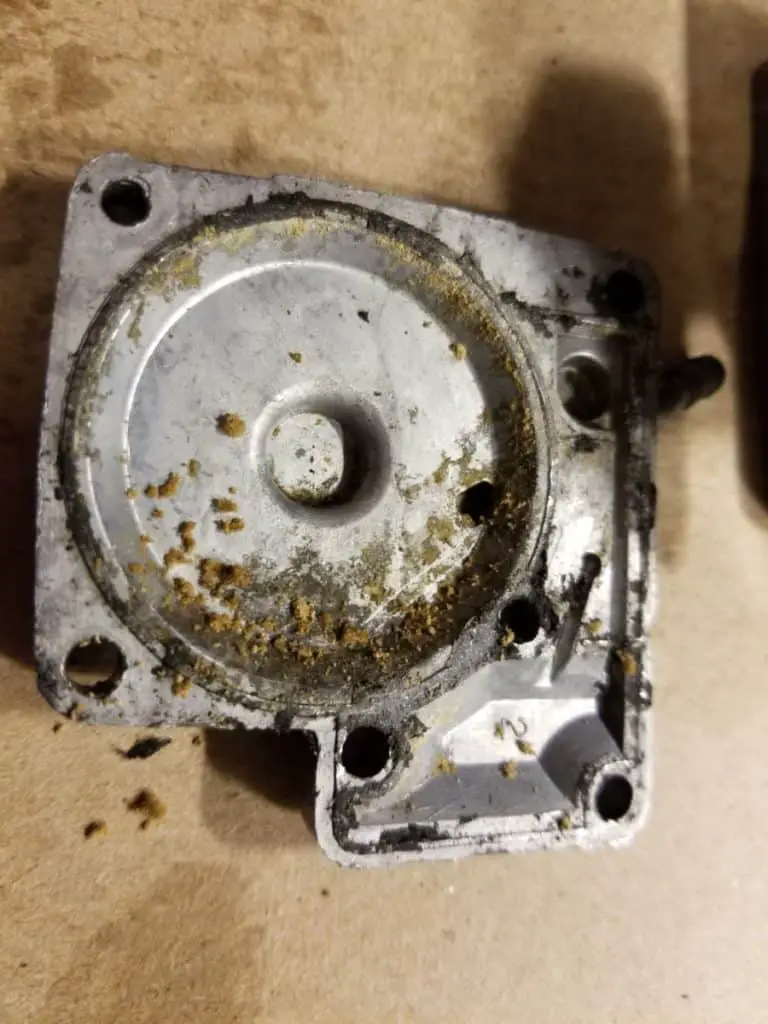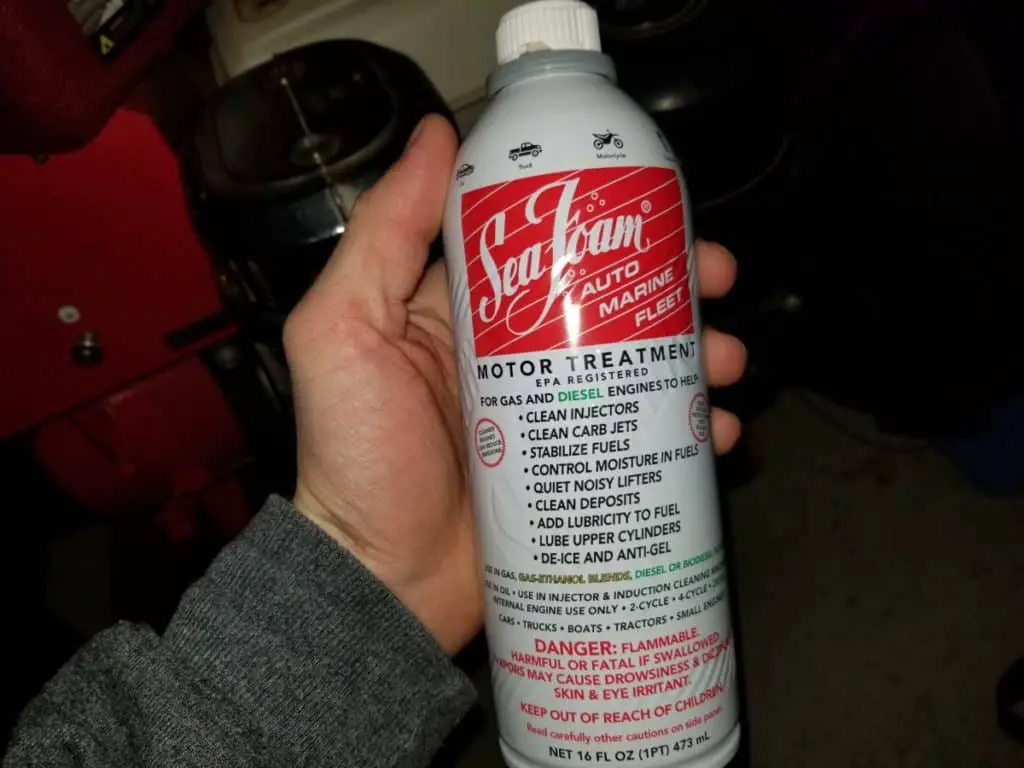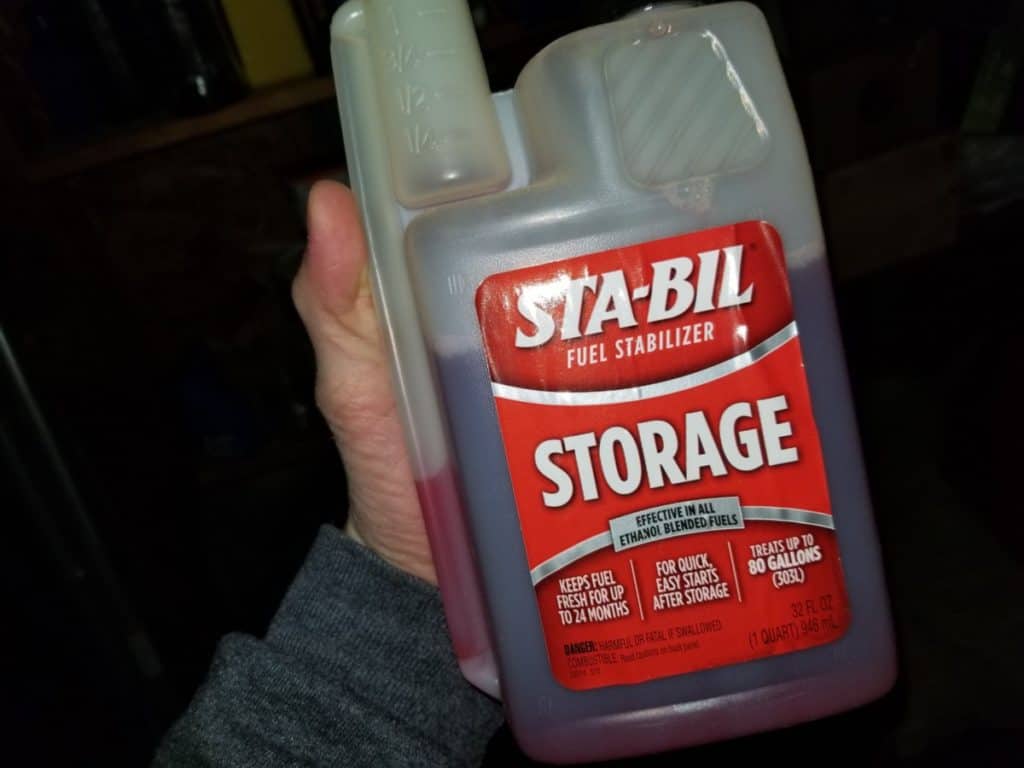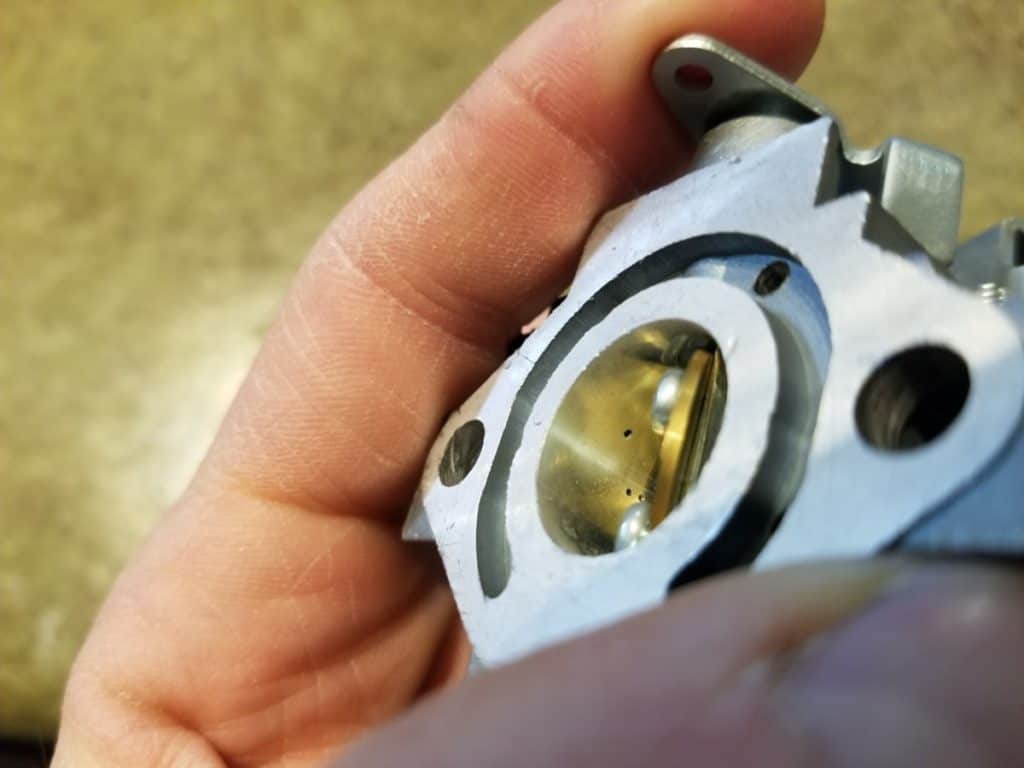When the storm is over and you’re ready to store your generator you might find yourself wondering if the gas inside the generator will go bad before the next use. I know this is one of my questions when I first got into prepping.
Does gas go bad in a generator?
Yes, untreated gasoline will certainly go bad in a generator in a relatively short time after use (1-3 months). Not only will gasoline lose its ability to combust properly, it can also gum up your carburetor, fuel filter and fuel lines. Properly stabilized gasoline can last for 1 to 2 years, however.
Just like everything, there’s a right way and a wrong way of doing things. You can certainly drain out all of the gasoline from your generator in between uses, or you can leave gasoline inside.
However, there’s a few steps you need to take to ensure that your gas won’t go bad and that your generator of will fire up the next time the power goes out.
I’ll discuss what makes your gasoline go bad, what bad gas will do to your generator, how to keep gas from going bad in between uses.
What makes Gasoline Go Bad in a Generator?
Oxygen is the primary reason for gas going bad inside of your generator. Oxygen itself as a free radical which will break down untreated gasoline (and almost everything else, for that matter) within 1 to 3 months.
Your gasoline is actually comprised of hundreds of different additives and compounds and oxygen will break them apart and reduce their efficacy.
Not only does oxygen oxidize your gas and make it less effective, exposure to the air allows the volatile compounds in your gasoline to evaporates out. These are known as “light-ends”. Once your light ends evaporate out you do not get them back and you’re left with the heavier, denser ends to try to combust within your engine.
Gasoline can also go bad in your generator faster if you have more air in your gas tank than gasoline. When it gets cold, the air within the gas tank will build-up condensation on the inside of the tank walls and the water will run down into your gasoline.
What will Bad Gasoline do to a Generator
When gasoline goes bad your volatile light ends will evaporate out, it will become oxidized, and over time your gasoline will develop a greener color. The ultimate result will be that your gasoline will start to turn into a varnish with in your gas tank.
Not only will this affect the inside of your gas tank but your fuel lines, fuel filter, and inside of your carburetor as well. The carburetor is full of tiny jets and orifices which will be easily clogged by a coat of varnish from oxidizing gasoline.

It does not take much at all to disrupt the performance of a carburetor.
When the gasoline loses its “light ends” due to evaporation and the additives become oxidized, you will notice a performance decrease in your engine.
If you let it get to the point where the gasoline is turning to varnish and getting green in color (and taking on a rancid smell) then your engine will likely run very rough or not run at all.
How to Prevent Gas from Going Bad in a Generator
You can easily keep gas in your generator without worries for up to 2 years if you follow the following steps:
- Keep your gas tank at the max-fill line
- Stabilize your gas upon purchase
- Run your generator for 10 minutes every month or two and place a load (I use a circular saw) on it for at least a minute
- To turn off the generator before storage or after testing, close the fuel valve and let the generator use up all of the remaining gas in the carburetor
The first thing that we can do is make sure to keep our gas tank at the max-full line if you’re going to store gasoline in your generator throughout the year. You don’t want to fill it up all the way to the top as this will leave no room for expansion when the gasoline gets hot as your engine is running.
The reason we want the gasoline topped off in the generator’s tank is to eliminate as much air as possible from being in the tank as well. Air contains moisture, and when your generator gets cold the moisture in the air will condensate on the inside walls of your generator and you’ll have gasoline mixing with water.

This will not be beneficial for optimal engine performance.
The second thing is to treat your gasoline with a fuel stabilizer before or immediately after you add the gas to your generators tank. Most fuel stabilizers are 1 oz per gallon of gasoline.
There’s a pretty small window from when you add fresh gas in your generator and when it starts to go bad. This window is even smaller if you use ethanol free gas.
After about only one month you will start to see a performance decline in your generator if you have untreated, ethanol free gasoline in the tank.
You’ll have about 3 months if you are using untreated, regular unleaded gasoline.
I prefer to add stabilizer to to my gas immediately after purchase so that it’s already pre-mixed when I have to add it to a machine. I actually keep a jar next to my stabilizer (I use SeaFoam) and I have the side marked with a 2 oz and a 5 oz gradation for my 2 and 5-gallon gas cans. I then place a piece of tape with the date and write “XX/XX/XXXX Ethanol Free, SeaFoam”.
I make sure to use that gas in my car after a year and refill for another year of storage.
The reason I choose to use SeaFoam is that it mixes in with the gasoline and prevents oxidizing, evaporation, and it also cleans out your engine and carburetor as you use it.

I used Stabil for years before switching and never personally had a problem with it. It really doesn’t matter too much which one you choose except with how often you might find yourself moving your generator or gas cans around.
Stabil, when added to to your gasoline, creates a film on the top of the gas which prevents air from having contact directly with your gasoline. This will reduce evaporation and oxidation.

However, after you’ve left your gasoline sitting for a while in your generator or gas can, the stable is prone to breaking up almost like a sheet of glass once you move it and create any sloshing around.
The film will break up and have cracks in between and it won’t really bond back together very well. These cracks expose your gasoline to air at certain points on the surface.
Seafoam integrates itself into your gasoline instead of creating a film on top. This is the primary reason for it having become my favorite stabilizer… the cleaning aspect as it’s used in your engine is just a bonus!
I have a link here for SeaFoam on Amazon if you like to add it to your list of preps. Here is a link to Stabil as well if you’d like to compare the two to make a decision for yourself.
Regardless of which one you choose, you should be able to get up to two years of usable gasoline by adding either one of them to your gasoline upon purchase.
Finally, for the well-being of the generator, do not let it sit for a year or more without use. It is an engine, and engines are designed to run — not sit idle.
Pick a day every other month, grab a beverage and start up your generator to let the gas flow through the lines and to let the engine run for a bit. After 10 minutes of idle, plug something into it that will require a little bit of effort from the generator. I typically use a circular saw.
I run the saw to test and re-energize the magnetism in the generator’s coils (they can lose their magnetism after sitting idle for too long and not produce power) and call it good.
To turn off the generator, don’t just use the “kill switch”. Close the fuel valve that runs from the tank to the carburetor. This will cause the engine to use up the rest of the gas in the carburetor and will keep gasoline out of the jets and tiny ports (just in case it does start to corrode).

And that’s it. Follow the aforementioned steps and you should be rocking when the next power outage happens! I’ve been running one of my generators off the same tank of gas for over 2 years now with no loss in generator power, so I know it can be done.
I do plan to drain the tank after this winter, however and start fresh. No need to push it!
